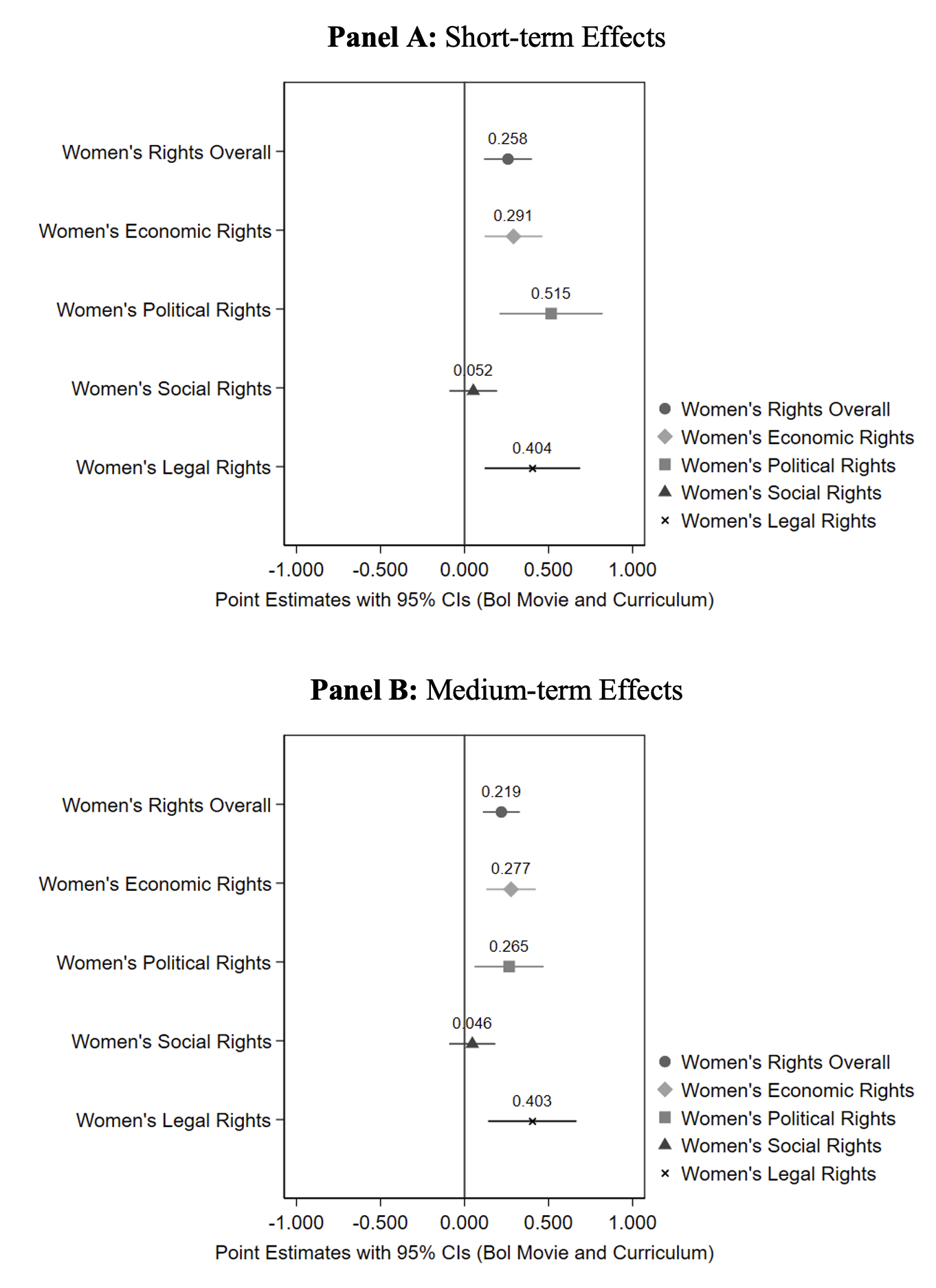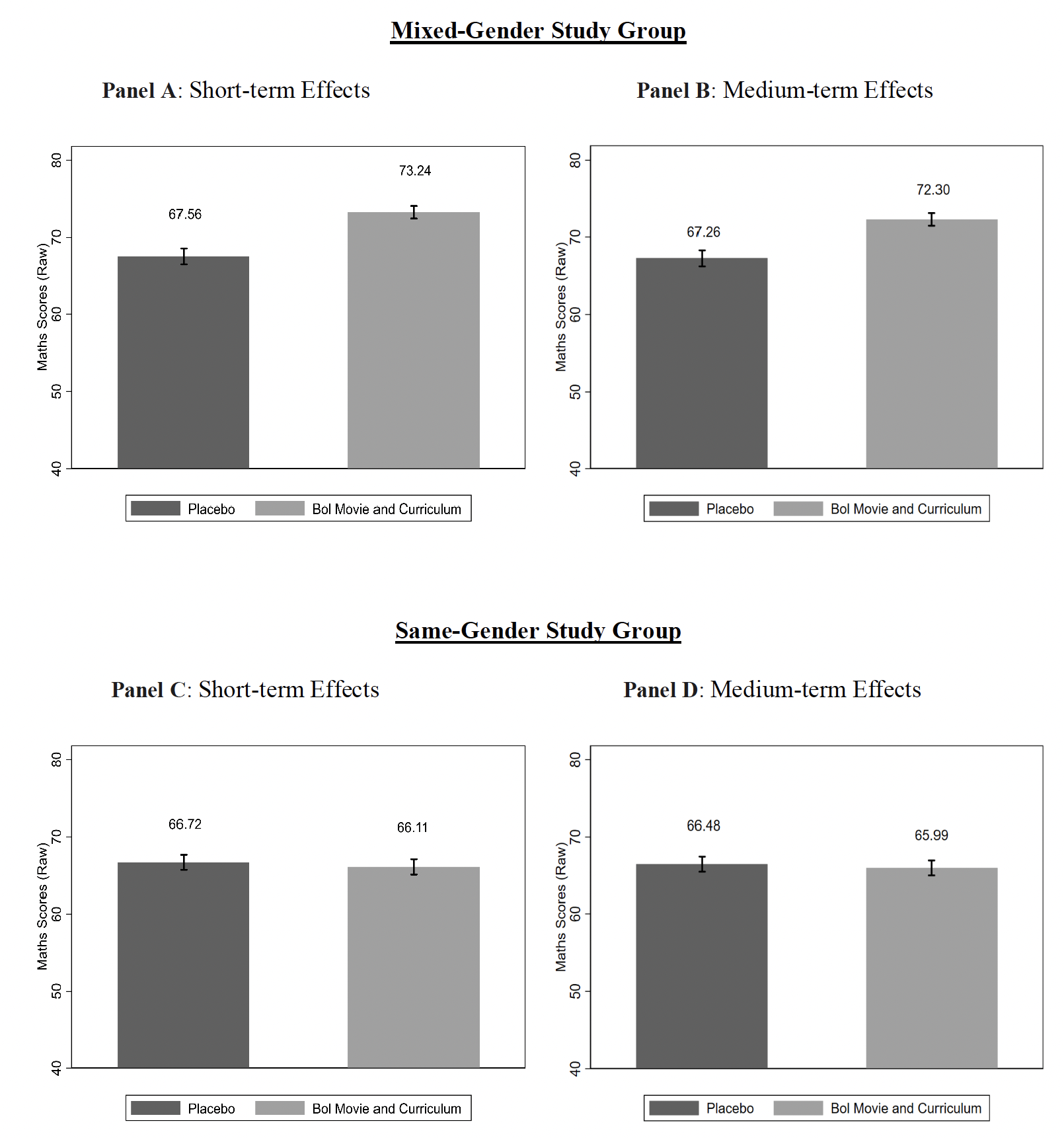
Progressive gender norms can be transmitted from teachers to students and improve classroom achievement through better cooperation among the sexes
The demand for suffrage heralded the broader women’s rights movements in the 19th and early 20th centuries, subsequently transforming into the feminist movement in the 21st century. Along the way, many milestones were reached, and strides were made in improving the lives of women and changing attitudes surrounding their position in the household, workplace, and society. Yet, progress has been much slower in certain places than others, revealing the stickiness of traditional gender norms. Even in seemingly progressive societies, the gaping hole between legal provisions for women and the ground realities has been the backbone of movements such as #MeToo.
Social norms are conditioned from childhood, both from explicitly being taught at home, and at school, from observing the behaviour of others. While the transmission of traits from parents to children and their peers is well documented (Maurin and McNally 2008, Bisin and Verdier 2011, Alesina et al. 2013, Doepke and Zilibotti 2017, Dhar et al. 2019), the role of teachers’ influences on transmitting norms is largely escaped systematic empirical analysis (Giuliano, 2020). Since children spend a significant portion of their time at school and look up to teachers as the primary authority figures outside their home, there is good reason to believe that their interactions with teachers also influence children’s adoption – or rejection – of socio-cultural norms, either consciously or subconsciously.
In a new paper (Mehmood, Naseer and Chen 2022), we test whether shifting teachers’ attitudes is possible, and if this shift also translates into a change in the attitudes and behaviour of students. We also experimentally vary desegregation within classrooms to examine its impact on students’ cooperation and academic achievement.
The experiment
We implemented a randomised control trial in collaboration with the Progressive Education Network (PEN) – one of the largest networks of charter schools in the world. We randomly assigned teachers to a 'visual narrative' – a live screening of the movie Bol, roughly three hours long, set in contemporary Pakistan and dealing with the issue of women’s rights. This was followed by an hour-long self-reflection workshop on the gender-related themes touched upon in the movie. In another prong of treatment, we augmented this visual narrative with a semester-long gender studies curriculum which the teachers then taught in class for four months. This was termed the ‘joint visual narrative & gender-rights curriculum’. We also cross-randomised teachers to organise students within their classes into mixed-sex or same-sex study groups.
Teachers’ gender attitudes were measured using indices constructed from survey responses to gauge support for women’s rights. We also used results of the gender implicit associations test (IAT), which measures implicit bias using word associations. To investigate whether these attitudes translate into real world preferences, we also observed teachers’ petitioning Pakistan’s parliament to repeal discriminatory laws. Similarly, to measure the impact on students, we constructed indices for support of women’s rights from surveys. We also measured students’ gender attitudes – using strategic dilemmas – via competition, cooperation, coordination, and redistribution games played with opposite-sex and same-sex partners. We then collected data on student achievement via math test scores.
Impact on teachers
Our results show a persistent shift in women’s attitudes six months and 12 months after the visual narrative as well as joint treatment. The visual narrative alone increased support for more equitable gender rights by approximately 0.15 standard deviations, with the effect compounding to 0.25 standard deviations when combined with the curriculum treatment (see Figure 1). A similar pattern is observed for IAT scores and teachers petitioning Pakistani parliament to repeal discriminatory laws. The greater impact of the joint treatment likely comes from the curriculum reinforcing the concepts and acting as a self-persuasion device, as shown in recent work by Eigen and Listokin (2012), and Schwardmann et al. (2022). Taken together, the results of surveys, IATs, and petitions paint a consistent picture that our treatments managed to genuinely shift teachers’ gender attitudes.
Figure 1 Impact of joint movie-curriculum treatment on teachers’ gender attitudes

Note: The figure summarises our main results using the Average Effect Size (AES) approach of Kling et al. (2004) and Kremer et al. (2009). The AES averages the normalised effects obtained from a seemingly unrelated regression in which each dependent variable is an index of several variables. Normalisation is relative to the placebo group. Women’s Rights Overall is an index consisting of all the statements concerning Women’s Economic, Social, Legal, and Political Rights.
Impact on students
A key feature of our design is our ability to study teacher-to-student transmission of attitudes. The teachers treated with the visual narrative had students who were more supportive of gender rights by about 0.10 standard deviations. These results are particularly striking because the visual narrative treatment solely focused on the teachers. The effects more than double in size to 0.25 standard deviations for students in the joint narrative curriculum treatment. The students in this group also showed improved mathematics test scores by 0.1 standard deviations, with the gender gap in math virtually disappearing between boys and girls (see Figure 2).
Figure 2 Difference in math scores following joint movie-curriculum and placebo treatments by type of study group

Note: Short-term and medium-term mathematics scores are shown on the right and left, respectively. Scores range from 0 to 100. The upper panels (Panel A and B) display scores for mixed-gender study groups, the lower panels (Panel C and D) for same-gender study groups, comparing students’ average scores under the joint movie-curriculum treatment with the placebo group. 95% confidence bands are also reported.
Lastly, we experimentally uncovered a mechanism explaining the rise of student achievement. Using a causal medication design, we cross randomised teachers to form study groups of same sex and opposite sex. We find that teachers who were assigned the joint treatment and re-randomised to form mixed-sex study groups had students improving their math scores by 0.15 standard deviations. However, no effect is observed for the students assigned to teachers who formed same-sex study groups. This argument is further supported by results of behavioural games: the mixed-sex study group students display greater cooperation with the opposite sex in strategic dilemmas. We interpret these empirical results as evidence that the classroom achievement in math improved via better cooperation among the sexes.
Conclusion
The past century has witnessed tremendous growth in the recognition of rights and freedoms across group boundaries. This paper provides experimental evidence for how teachers may transmit gender attitudes to their students, specifically how they may diffuse more equitable gender norms. Our findings have two key takeaways for policymakers. Firstly, by demonstrating that gender attitudes are transmissible from teachers to students, we add to the scarce research on the impact of teachers’ non-cognitive abilities of teachers, and their transmission to students (Giuliano, 2020). This may have direct bearing on teacher hiring policies, and open the door to selecting and training teachers with gender sensitivity. Secondly, the paper suggests the possible pitfalls of segregation in schools. Our evidence supports the notion that interactions with the opposite sex in school are crucial in developing the ability to consider alternative perspectives, to cooperate and learn effectively. Desegregation within schools may then be considered a policy tool to improve the plight of women in traditional societies where change is particularly slow.
References
Alesina, A, P Giuliano and Nunn, N (2013), “On the origins of gender roles: Women and the plough”, The Quarterly Journal of Economics 128(2): 469-530.
Bisin, A and T Verdier (2011), “The economics of cultural transmission and socialization”, Handbook of social economics, Vol. 1, 339-416, North-Holland.
Dhar, D, T Jain and S Jayachandran (2019), “Intergenerational transmission of gender attitudes: Evidence from India”, The Journal of Development Studies 55(12): 2572- 2592.
Doepke, M and M Tertilt (2009), “Women's Liberation: What's in it for Men?”, The Quarterly Journal of Economics 124(4): 1541-1591.
Eigen, Z J and Y Listokin (2012), “Do lawyers really believe their own hype, and should they? A natural experiment”, The Journal of Legal Studies 41(2): 239-267.
Giuliano, P (2020), "Gender and culture", Oxford Review of Economic Policy 36(4): 944-961.
Maurin, E and S McNally (2008), “Vive la revolution! Long-term educational returns of 1968 to the angry students”, Journal of Labor Economics 26(1): 1-33.
Mehmood, S, S Naseer D and Chen (2022), “Transmitting Gender Rights”.
Schwardmann, P, E Tripodi and J J Van der Weele (2022), “Self-Persuasion: Evidence from Field Experiments at International Debating Competitions”, American Economic Review (forthcoming).



